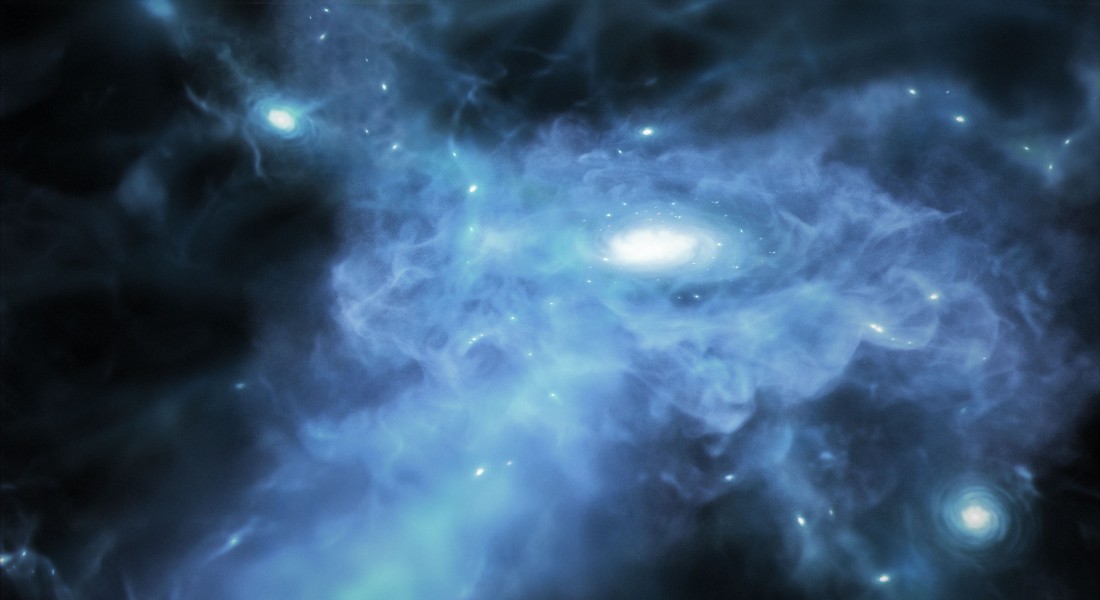Cosmic time machine: Astronomers see birth of three of universe's absolute earliest galaxies for the first time

The story of our vast and mysterious universe begins roughly 13.8 billion years ago with the colossal explosion known as the Big Bang. This event birthed a primordial soup of subatomic particles, which eventually coalesced into protons, neutrons, and simple atoms. But for nearly the first 400 million years, the universe remained an opaque fog of hydrogen gas, devoid of the familiar stars and galaxies that pepper our night sky.
Now, the James Webb Space Telescope, humanity's most powerful cosmic eye, has peered back through the eons, capturing the very first light of galaxies emerging from the primordial soup.
Using Webb, researchers at the Niels Bohr Institute witnessed the birth of three of the universe's absolute earliest galaxies, somewhere between 13.3 and 13.4 billion years ago. These nascent structures emerged a mere 400-600 million years after the Big Bang, signifying galaxy formation within the first few percent of the universe's entire lifespan.
"You could say that these are the first 'direct' images of galaxy formation that we’ve ever seen. Whereas the James Webb has previously shown us early galaxies at later stages of evolution, here we witness their very birth, and thus, the construction of the first star systems in the universe," says Assistant Professor Kasper Elm Heintz from the Niels Bohr Institute, who led the new study.
Epoch of Reionization
The three galaxies emerge during the Epoch of Reionization - a period following the Big Bang when energy and light from the first stars pierced through the hydrogen fog, gradually illuminating the cosmos.
Using Webb's infrared vision, the researchers captured these large amounts of hydrogen gas, the very building block of stars and galaxies. This marks the most distant measurement of cold neutral hydrogen gas ever achieved, thanks to Webb's incredibly sensitive infrared capabilities.
"During the few hundred million years after the Big Bang, the first stars formed, before stars and gas began to coalesce into galaxies. This is the process that we see the beginning of in our observations," explains Associate Professor Darach Watson.
The team has already requested additional observation time with Webb, aiming to delve deeper into their findings and the earliest epoch in the formation of galaxies.
The discovery holds immense significance for humanity's quest for understanding our origins.
"One of the most fundamental questions that we humans have always asked is: 'Where do we come from?'. Here, we piece together a bit more of the answer by shedding light on the moment that some of the universe’s first structures were created. It is a process that we’ll investigate further, until hopefully, we are able to fit even more pieces of the puzzle together," explains Associate Professor Gabriel Brammer.
Their findings are published in the scientific journal Science.
Webb: A cosmic time machine
The James Webb Space Telescope's ability to look back in time is akin to having a time machine. The light it captures from distant galaxies has travelled billions of years to reach us, providing a snapshot of the universe as it was in its infancy. This allows astronomers to study the formation and evolution of galaxies over cosmic time.
Webb's infrared capabilities also allow it to see through the cosmic dust that often obscures young galaxies. This dust, which is made up of tiny particles of carbon and silicon, can absorb and scatter visible light, making it difficult to study the early stages of galaxy formation with optical telescopes. By observing in the infrared spectrum, Webb bypasses this dusty veil, revealing the hidden structures of galaxies in their earliest stages of formation.
As scientists continue to analyze the data from Webb and make new discoveries, our understanding of the early universe will continue to evolve. This cosmic time machine has just begun its journey, and the potential for groundbreaking revelations about the birth and evolution of galaxies is limitless.










